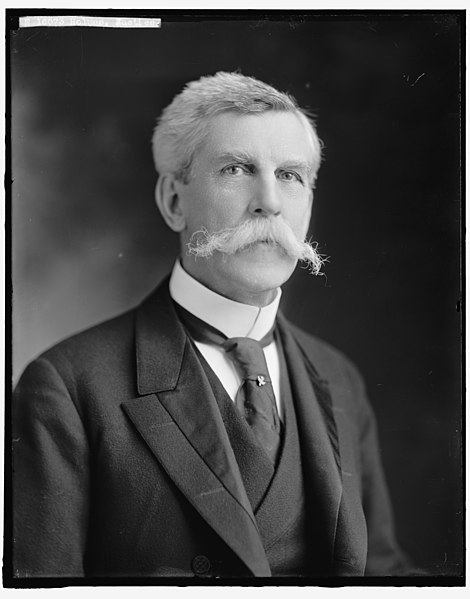World War Two
Published 26 Oct 2019Hitler finds out that not everyone is ready to do his bidding. Much to the frustration of Hitler, Franco, Petain and Mussolini all have their reasons to take the high road.
Join us on Patreon: https://www.patreon.com/TimeGhostHistory
Or join The TimeGhost Army directly at: https://timeghost.tvFollow WW2 day by day on Instagram @World_war_two_realtime https://www.instagram.com/world_war_t…
Join our Discord Server: https://discord.gg/D6D2aYN.
Between 2 Wars: https://www.youtube.com/playlist?list…
Source list: http://bit.ly/WW2sourcesWritten and Hosted by: Indy Neidell
Produced and Directed by: Spartacus Olsson and Astrid Deinhard
Executive Producers: Bodo Rittenauer, Astrid Deinhard, Indy Neidell, Spartacus Olsson
Creative Producer: Joram Appel
Research by: Indy Neidell
Edited by: Karolina Dołęga
Map animations: EastoryColorisations by Norman Stewart and Julius Jääskeläinen https://www.facebook.com/JJcolorization/
Sources: Biplane by Hea Poh Lin from the Noun Project
Eastory’s channel: https://www.youtube.com/channel/UCEly…
Archive by Screenocean/Reuters https://www.screenocean.com.A TimeGhost chronological documentary produced by OnLion Entertainment GmbH.
October 27, 2019
Hitler is Disappointed by his Allies – WW2 – 061 – October 26, 1940
Freedom of speech under threat (again)
In The Atlantic, Ken White strongly urges pro-free-speech advocates to avoid using some arguments that have been bandied around recently:
What speech should be protected by the First Amendment is open to debate. Americans can, and should, argue about what the law ought to be. That’s what free people do. But while we’re all entitled to our own opinions, we’re not entitled to our own facts, even in 2019. In fact, the First Amendment is broad, robust, aggressively and consistently protected by the Supreme Court, and not subject to the many exceptions and qualifications that commentators seek to graft upon it. The majority of contemptible, bigoted speech is protected.
If you’ve read op-eds about free speech in America, or listened to talking heads on the news, you’ve almost certainly encountered empty, misleading, or simply false tropes about the First Amendment. Those tired tropes are barriers to serious discussions about free speech. Any useful discussion of what the law should be must be informed by an accurate view of what the law is.
[…]“This speech isn’t protected, because you can’t shout ‘Fire!’ in a crowded theater.”
This line, though ubiquitous, is just another way to convey that “not all speech is protected by the First Amendment.” As an argument, it is just as useless.
But the phrase is not just empty. It’s also a historically ignorant way to convey the point. It dates back to a 1919 Supreme Court decision allowing the imprisonment of Charles Schenck for urging resistance to the draft in World War I. Justice Oliver Wendell Holmes Jr. wrote that the “most stringent protection of free speech would not protect a man in falsely shouting fire in a theatre and causing a panic.” This decision led to a series of cases broadly endorsing the government’s ability to suppress speech that questioned official policy. But for more than half a century Schenck has unequivocally and universally been acknowledged as bad law.
Holmes himself repented of the decision — though he continued to indulge his taste for pithy phrases with lines like “Three generations of imbeciles are enough” to justify forcible government sterilization of the handicapped.
So when you smugly drop “You can’t shout ‘Fire!’ in a crowded theater” in a First Amendment debate, you’re misquoting an empty rhetorical device uttered by a career totalitarian in a long-overturned case about jailing draft protesters. This is not persuasive or helpful.
Did You Know These 7 BASICS ABOUT MAPLE LUMBER?
Woodworkers Source
Published on 26 Dec 2018Wait, what? Hard maple, soft maple, what the heck is country maple and while we’re at it PLEASE EXPLAIN curly maple, bird’s eye maple, quilted maple, ambrosia maple.
Seriously folks, we get this question a lot. LIKE, A LOT. First of all, sorry about the confusion. Second, it even confounds us from time to time. But we’re gonna fix that today.
Let’s do this! This video demonstrates the 7 maples that you might encounter at your lumber supplier, and distills it all down the essential differences that might help you out.
***
Visit us for hardwood lumber
http://www.woodworkerssource.com
QotD: Hating jazz
“Jazz is for people who don’t like music,” says GQ‘s Deputy Editor; it must be fun to play, he says, because it sure ain’t fun to listen to. (“I remember this tune,” he’ll say, “which is more than the guy playing it does.”) It is, in the words of some forgotten Eighties comedian, six guys on stage playing different tunes. GQ even ran a joke about it a few years ago: “Q: Why do some people instantly hate jazz?” “A: It saves time in the long run.” Even my youngest daughter hated it at the time. Aged five, after being subjected to hours of Charlie Parker in the car one weekend, she said, “I don’t like this music. There are no songs for me to sing to.” (The only jazz tune she liked is “Everybody Want To Be A Cat” from Disney’s The Aristocats.) Unbeknown to her, she was echoing John Lennon’s little-known jibe: “Jazz never does anything.”
Some people’s innate hatred of jazz is simply the result of an unfortunate experience, but then anyone who’s witnessed Art Blakey performing a three-and-a-half hour drum solo is entitled to feel a little peeved (and I speak as someone who has seen one at close quarters). On top of this, some people just don’t get it. Like the later work of James Joyce, the films of Tarkovsky and “tax harmonisation”, the fact that some things will always lie just beyond the common understanding is something jazz enthusiasts must learn to live with.
Also, jazz has often been victim to the vagaries of fashion, destined to be revived at the most inappropriate moments. The last time jazz was really in the limelight was back in the mid-Eighties, when it became the soundtrack du jour in thousands of matt-black bachelor flats all over designer Britain and when every style magazine and beer ad seemed to look like a Blue Note album cover. Jazz went from being a visceral, corporeal music to a lifestyle soundtrack. This was the age of Style Council, of Absolute Beginners … of Sting. Buying into jazz was meant to lend your life a patina of exotic sophistication and was used to sell everything from Filofaxes and coffee machines to designer jeans and sports cars.
Dylan Jones, “The 100 best jazz albums you need in your collection”, GQ, 2019-08-25.







